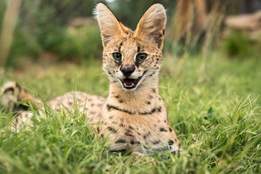
‘Spooky’
Many people celebrated Halloween in part this week by looking up spooky.
It is that time of year to get the candy and decorations ready, maybe curl up and put on a horror movie. If you’re a spooky movie enthusiast, you may have recognized familiar settings in your favorite films. That is because many iconic and modern horror movies have been made right here in New Jersey.
—Lucas Frau, The Bergen Record (New Jersey), 28 Oct. 2025
We define the relevant sense of the adjective spooky as “strange, unsettling, or frightening in a way that suggests the supernatural.” Sometimes spooky refers specifically to things that relate to, resemble, or suggest ghosts or spooks. Spook was first used around the turn of the 19th century and is a borrowing of the Dutch spook, meaning “ghost.”
‘Catastrophe’
Lookups were high for catastrophe in relation to Hurricane Melissa.
“The United States shares deep and enduring ties with Jamaica; over a million Jamaican Americans are watching anxiously as their loved ones brace for catastrophe. The United States must stand with Jamaica and the entire Caribbean before, during and after Hurricane Melissa makes landfall,” Reps. Gregory Meeks, D-N.Y., ranking member of the committee, and Yvette Clarke, D-N.Y., said in a statement.
—Darryl Coote, United Press International, 28 Oct. 2025
We define the relevant sense of catastrophe as “a momentous tragic event ranging from extreme misfortune to utter overthrow or ruin.” This is the most commonly used sense of catastrophe today. However, when the word first entered our language in the 16th century, it was as a theater term meaning “the conclusion or final event of a dramatic work.” Since catastrophe was most often used in reference to a tragedy, it quickly extended its meaning to be applied to any sort of unhappy ending, and within a few more centuries had come to take on its present sense.
‘Tear gas’
More people than usual looked up tear gas this week, following news of its use by federal agents in U.S. cities.
They used tear gas in a neighborhood where children were about to march in a Halloween parade, Judge Ellis said. They failed to warn residents before tossing tear gas canisters at them, she said, noting an incident in which an agent threw a canister out of a car as it drove away.
—Julie Bosman, The New York Times, 28 Oct. 2025
We define the noun tear gas as “a solid, liquid, or gaseous substance that on dispersion in the atmosphere irritates mucous membranes resulting especially in blinding of the eyes with tears and that is used chiefly (as by the police and the military) to disperse large crowds of people.” Tear gas is also used as a verb; both noun and verb first appeared in English in the early 1900s.
‘Blue jay’
The names of the two teams playing in Major League Baseball’s World Series this week both saw upticks in lookups. First up is blue jay.
Vladimir Guerrero Jr.’s post-season coronation continues with heroic moment for Blue Jays in Game 4 of World Series
—(headline), The Toronto Star, 29 Oct. 2025
Blue jay is the common name bestowed on a crested bright blue North American jay whose taxonomic name is Cyanocitta cristata. Blue jays are members of the family Corvidae, which also includes crows and ravens.
‘Dodger’
Next up is dodger.
Freddie Freeman’s walk-off homer lifts Dodgers to 18-inning win in World Series Game 3
—(headline), The Los Angeles Times, 28 Oct. 2025
We define several senses of dodger. Perhaps most intuitively, dodger can mean “one who dodges,” but it can also refer to a small leaflet; a cake of corn bread that is fried, baked, or boiled as a dumpling; or a usually canvas screen on a boat or ship that provides protection from spray.
Word Worth Knowing: ‘Hodag’
The hodag is a mythical animal reported chiefly from Wisconsin and Minnesota. It is noted for its ugliness, lateral horns, and hooked tail, and reputed to be outstanding in both ferocity and melancholy. If you’re trying to visualize or understand how a creature could be both ferocious and melancholy, just consider how you would feel if your dictionary entry immortalized you as being “noted for its ugliness.” Shed a tear for the upper Midwestern hodag?
A guided walk through a “spooky” trail focuses on the Wisconsin legend, the mysterious Hodag, a horned creature from lore tied to Rhinelander. A costumed Hodag Hunter tells guests about the regional legend, who might make an appearance during the hunt.
—Jim Riccioli, The Milwaukee Journal Sentinel, 1 Oct. 2025




